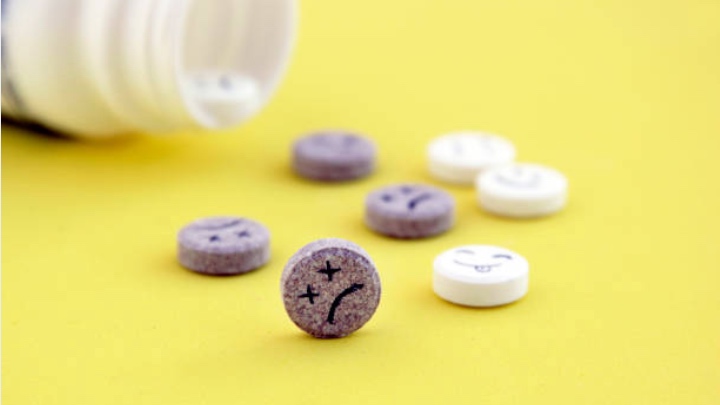A complaint is a statement from a customer expressing dissatisfaction with the manufactured product, whether with the manufacturer's service, the product's packaging, the product's usability, or damage to the product. For pharmaceutical companies, GMP complaints typically surround product quality; however, complaints can also be due to improper packaging or mislabelling.
GMPs require that pharmaceutical companies develop and implement rigid, systematic procedures to document and investigate each complaint thoroughly.
In these cases, SOPs must provide complete details for handling complaints. QA, Finance, Marketing, Production, QC, and Regulatory Affairs must also be involved in the complaint-handling process.
There are other requirements, too:
- The manufacturer must maintain a file of drug product complaints
- The necessary records for closed complaints must be maintained
- A designee must be appointed to handle complaints with supporting staff
- The designee should be from the quality management unit
- If it is suspected there is affected product within a batch, or other batches of that product, all batches must be investigated to determine if they are affected as well
- All decisions made because of a complaint must be recorded and referenced to the corresponding batch record
- All written records involving drug product complaints must be maintained until at least one year after the expiration date or one year after the complaint was received, whichever is longer
- In the case of certain OTC drugs without given expiration dates, the complaint record must be maintained for three years after distribution of the product
Processing complaints
It is necessary to have a channel for handling complaints such as toll-free numbers, email addresses, chat rooms, or post office boxes. Whatever the channel, a designee must be appointed to receive the complaint and enter it into an investigative form that can be addressed by QA.
The most flexible channels are toll-free numbers or chat rooms, so the recipient can speak with the customer and get complete details of the issue. If the complaint is sent via email or to a post office box, the recipient must contact the customer for details.
The amount of product with the problem must also be documented, as well as any other noteworthy information
The manufacturer should then require an investigation form to be completed upon receipt of a complaint. The form must document basic information, such as the customer's name, address, phone number, and email address, as well as information about the problem, such as product name, lot number, and manufacturing and expiration dates.
The recipient must ask for a detailed description of the complaint. The amount of product with the problem must also be documented, as well as any other noteworthy information, such as whether the defective sample will be returned.
It is important that each opened complaint has a code or sequential, unique number. The date the complaint was received also must be recorded on the investigation form.

GMP specialist Joy McElroy
Investigation set up
Upon receipt of the form, QA must begin the investigation. Typically, the investigation is divided into two phases: documentation and laboratory analysis.
The documentation phase includes checking if the same complaint occurred earlier in the lot or if a nonconformance was found during manufacturing that would explain the complaint.
The primary documentation to be reviewed consists of complaint files and batch records.
Complaint files should be reviewed to see how many other complaints of the same nature have occurred for a specific lot and to understand how they were handled.
Batch records must be verified to see if there was any nonconformance during production that would explain or confirm the quality deviation and how it was investigated and concluded.
The laboratory analysis phase entails having QC analyse both complaint samples and retained samples of the affected product.
The reserve samples serve as representatives of the manufactured lot. On the other hand, the customer samples have gone through distribution and third-party holding and may not be representative of the actual manufactured lot of product.
QC analysis of the retained samples is an important part of the investigation. These samples were held by the manufacturer under the correct conditions of temperature, humidity and light not to alter their identity, strength, quality and purity. This allows the manufacturer to know whether the problem began during manufacturing or during the distribution and use of the manufactured drug.
If the customer does not send the complaint samples, the investigation must be carried out on the retained samples only.
Confirmed and unconfirmed complaints
A complaint is confirmed when only the retained samples or the complaint sample show out-of-specification results, but it is evidently a one-time, unexplained product event.
An example might be if a single tablet is missing from a blister packet in the complaint sample, but none were missing from the retained sample. Because it is an identified quality problem in the complaint sample, the complaint is noted as confirmed.
A complaint is unconfirmed when both complaint and retained samples show results that are not within specifications or when only the complaint sample shows out-of-specification results that cannot be considered a single, unexplained product event.

It should be noted that out-of-specification results in a complaint sample can be a result of mishandling or misuse when the drug was not kept under the appropriate conditions of temperature, humidity and light, so its identity, strength, quality and purity were altered.
An example of an unconfirmed complaint is a change in the appearance of the drug due to light, uncontrolled temperature, or humidity. The problem is classified as unconfirmed because it did not occur as a quality problem or deviation in the retained samples, but it did occur in the complaint samples due to mishandling.
The designee for handling complaints and the QA manager must sign off on the complaint form upon completing the investigation, which should conclude within 30 days.
Complaint files should be retained for at least one year after the expiration date of the lot.
Responsive action
Corrective actions must be implemented for all confirmed complaints. The actions can range from simple retraining to a formal corrective and preventive action (CAPA) plan.
The type of corrective action depends on the severity of the complaint. If a CAPA is issued, a team consisting of QA, QC, Regulatory Affairs, and Manufacturing Management should be assembled. The team must decide if there is a reasonable chance the use of, or exposure to, the drug product with the confirmed quality problem may cause a serious adverse event. If so, a recall must be implemented.
The pharmaceutical company must provide feedback to the customer and issue a written response to the complaint explaining the investigation, the approach taken, the results and any implications.
The report must be readily available for regulatory agency inspectors upon request, particularly during a GMP inspection
If a quality problem was confirmed, the customer may be sent a free replacement product along with the letter of response. The report must be readily available for regulatory agency inspectors upon request, particularly during a GMP inspection.
If a complaint investigation results in a possible adverse event, the product must be recalled. An adverse event is an injury resulting from medical intervention related to a drug. This includes medication errors, adverse drug reactions, allergic reactions, and overdoses.
Serious adverse events that result in a fatality or near-death incident must be reported to the FDA, which has an adverse event reporting system called FAERS (FDA Adverse Event Reporting System).
The reports in FAERS are evaluated by clinical reviewers in the Center for Drug Evaluation and Research (CDER) and Center for Biologics Evaluation and Research (CBER) to monitor the safety of products after they are approved by the FDA.
If a potential safety concern is identified in FAERS, it is evaluated. The FDA may take regulatory action to improve product safety and protect public health, such as:
- Updating a product's labelling information
- Restricting the use of the drug
- Communicating new safety information to the public
- Removing a product from the market
Healthcare professionals, consumers and manufacturers, may all submit reports to FAERS. Healthcare professionals and consumers may also report to the product's manufacturer. If a manufacturer receives a report from a healthcare professional or consumer, it is required to send the report to the FDA as specified by regulations.




